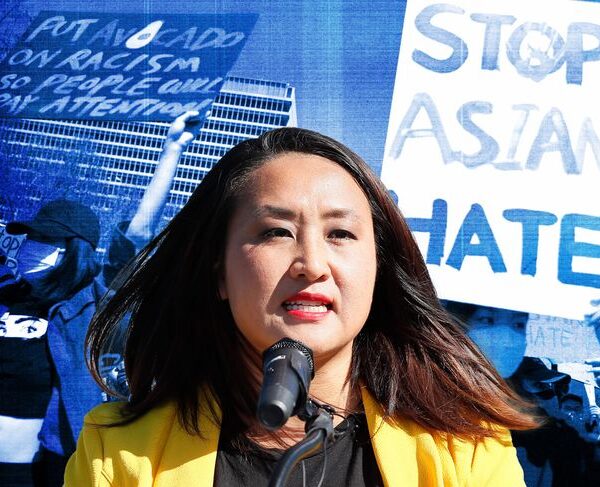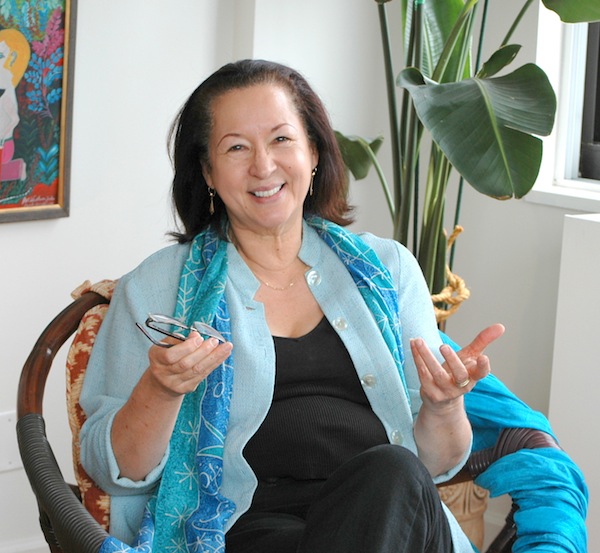Magazine, Living Well, The Immigrant Experience
More than 500,000 people are employed in California’s massive agriculture industry, serving in all capacities from picking crops to working at packing plants. Crowded housing and work sites, along with daily exposure to poor air quality, harmful pesticides, and a host of underlying conditions make California ag workers highly vulnerable to a COVID-19 infection. In 25 farm-worker communities infection rates were about 2.5 times higher than the state average.
At a media briefing hosted by Ethnic Media Services (EMS) speakers discussed the challenges of getting accurate data about the farm-worker community; the impact of expanded MediCal, which aims to provide health insurance to all Californians regardless of immigration status; the need for continuing a vigorous vaccination campaign including updated boosters; and measures to expand access to anti-viral treatment for farm-workers.
Dr. Ilan Shapiro Strygler, Chief Health Correspondent and Medical Affairs Officer at AltaMed gave an overview on the state of health, especially during the pandemic of our agricultural Workforce:
Dr. Shapiro: For the past seven years, I have been serving more than 400,000 patients. I work in Fort Myers Florida serving a little migrant workers community and the reality is that we have had really good moments during the pandemic and some things that we need to continue making sure that we can fix and improve for the health of our community.
The first thing is that, the way that we’ve delivered healthcare in 2019 from a location communication and of course all the campaigns that we were doing were quite different. We knew that going to our farmworkers was essential and important but we never felt that until we were struggling in 2020. When most of the communities were at home they were out there making sure that we had something to feed our families and they were getting exposed and also working as essential workers for our community. Right now the take-home message is how we can better communicate. I do not talk about education which could be a degree, an MBA, or a doctoral level thing but right now our communities need information and how are we going to deliver that information? As we have seen in California we actually put a lot of coverage out there from radio when they were working to actually going out there and talking to them one by 1 to make sure that they understood the importance of being protected, being there for their families and having that equal opportunity to treatments and preventive services.Covid 19 right now has opened a lot of conversations for our communities, from farmworkers and other essential workers to the point that now we know that we need to start putting concordant doctors in areas that our communities need it. When we went to the fields or when we would go out there and do it campaigns and they they hear me speak Spanish or bring some other indigenous languages, they smile and maybe I do not understand Pechua or other languages out there but at the moment that we are there and we tried to mix and match the best way that we can that actually serves the community because the cultural aspect of herbs, medications and order things are essential parts of how we are delivering care in our fields for that specific community. Covid-19 hurt our community, we know that at the moment they live in certain close-quarter areas where the chances of getting infected were higher and not only that but complication rate, when you have diabetes, hypertension, a lot of our communities creates more waves and problems.
Noe Paramo, Director of the Sustainable Rural Communities Project at the California Rural Legal Assistance Foundation shared his perspective on the pandemic and farmworkers and hope for closing disparities in healthcare in the workforce.
I thank you for the invitation returning to participate I appreciate this and on behalf of California Rural Legal Assistance Foundation and our staff in a statewide nonprofit legal services organization, our focus is rural low-income farmworker communities. We’ve been working on trying to improve access care and coverage for farmworker communities and to echo Dr. Shapiro’s comment around education and the needs for providers, the disparities were exacerbated during the pandemic and the need for equity in applying these principles for our underserved and marginalized farmworker communities and also the need for providers which brings to mind a recent conversation with assembly member Dr Arambula who really focused on the need to have providers in the rural areas such as the San Joaquin Valley and also to bring a more doctors as Dr. Shapiro said through the UC system medical school through UC Merced. A solution to the issue that’s going to come as we’re expanding medical come January 1, 2024 to undocumented ages 26 to 49 that expansion is going to bring a lot of issues that we need to address and leading up to the foundation working with Senator Anna Caballero spearheaded funding fiscal policy to update farmworkers health data that was over twenty years old and it landed at UC Merced and UC Merced has completed the study where they interviewed over 1,100 Farm Workers in hundreds medical exams and together harnessed up-to-date data to address these social determinants of health demographics and these health behaviors. And these results will be disseminated soon and the have been going through the California Department of Public Health approval process and they will be disseminated to policy makers, and stakeholders.So that’s being done and when that hit then UC Merced said we need to really address the pandemic aspect and scheduled a conference and brought together researchers to really look at these issues that have been highlighted in terms of the housing, the access, the geography, gender, the language, the cultural aspects are critical parts.However, to also understand some of the data that’s coming out is that even with the proposed expansion of medical to the 26th to 49 working age farmworkers, we know that around 40% are not going to be eligible for the expansion of medical and that’s because they’re going to be over income primarily and so as a result along with UC Merced working with children resulting in Spanish and Dr. Kasam we obtained a grant for the Robert Wood Johnson Foundation to look at policy options to see how we can expand medical to address this gap in coverage that is going to happen to farmworkers.We are in the process of that until we can anticipate that concluding there may made in between there will be an uninsured conference. The information updated will be updated and then disseminated and we also look to provide that broadly.So we are still gathering information. As Dr. Shapiro said, we need to get this together cuz these policies are going to address these inequities in our communities. So that’s a high policy level and at Searly Foundation when where we were working to address the pandemic as it hit we partnered with UC Davis and established a project to bring mobile testing bands to 4 counties in the San Joaquin Valley, the YOLO Stanislaus were in Modesto, Fresno,and Madera. This was to address these issues of access to get them tested.
Ed Kissam, member of the National Center for Farmworker Health Advisory Committee to the Centers for Disease Control and Prevention.
I want to focus on equity for farm workers and immigrants in respect to getting treatment or covid-19 but the start there I wanted to expand a little bit on comments the doctor Shapiro and Noe made about the measures of inequity experienced by Farm Workers. California agricultural counties started doingoutreach to Farm Workers in a very uneven way, some work early and hard and well and others drag their feet. So overall I’m estimating that about half of California’s farmworkers are vaccinated and that’s about what 8.20 percentage points below the national average, moreover one of the issues that is really crucial at this point with the new Alma Prime variance is that simply being vaccinated doesn’t provide the kind of protection we’d like. We would really like to see and for once I’m part of the mainstream. CDC is calling for a huge emphasis on people getting up to date with vaccinations, that is getting vaccinated with with the latest, newly designed by vaccine. Our progress nationally on that front is really worrisome with only about 14% of the eligible people in the nation having gotten the up-to-date vaccinations. Unfortunately once again farmworkers are disproportionately left behind with the rate of new boosters, the MRNA boosters, the bivalent vaccine in about 5 to 6 per cent and most of the agricultural counties of California. So that’s why treatment is important because without being up-to-date with vaccinations it’s going to be a disproportionate number of people who are at risk of very serious illness. CDC several years back looked at how many Americans are high-risk for the factors that make people get serious cases of covid and about half of Americans were, forty to fifty percent were. However it’s important to remember that another consideration is it’s not just comorbidities, other medical conditions like being overweight, having diabetes, cardiovascular disease, those aren’t the only things that lead to more serious cases of covid. 1 is simply being older so people over 50 years old are much more vulnerable to having serious cases. A particularly crucial issue I in farmworker communities is that pregnancy also makes women more vulnerable to serious cases of covid. So real key strategy going to be getting pregnant women vaccinated as well as getting older people vaccinated. One of the other issues that’s not very much recognized but really California Department of Public Health really deserves to be commended because Dr. Tomas Aragon urged everyone who turned out to have a positive covid test to seek treatment and to explore treatment because some of them may have medical conditions that they don’t know about which make them high risk and moreover simply being unvaccinated or not being up to date with vaccinations also increases risks. So essentially almost all farmworkers are at risk of having a serious case of covid-19 if they are infected. I wanted to tell you a little bit about a one-stop shopping approach which the Biden Administration articulated back in March and wich University California Davis Center of reducing Health disparities is implementing, trying to tailor it to the needs of farmworker communities and that’s called test-to- treat. It basically means that the initiative is to get farmworkers tested as soon as they have symptoms, to get them linked to a provider to get assessed for getting Paxlovid the life-saving antiviral drug which has decreases the risk of serious illness by 90% in unvaccinated people and getting them rapidly into been treated and that’s crucial because the antivirals only work well within five days of people being infected and having symptoms. Unfortunately, half the farmworkers, what we’ve learned from the project is that about half of the farmworkers being to having difficulties in accessing medical care never sought treatment for covid-19 when they were infected. We have to improve that percentage. We also have to improve the percentage of people who can rapidly get greeted. At the moment it is fairly easy to get access to antivirals if you have a private physician or a relationship with a community health center. However, if you’re uninsured and have only in the past been going to emergency rooms or urgent care you don’t have that relationship and it’s hard to get set up for treatment right away. So I would just like to wind up saying that, it’s going to be really important to continue to make the investments that are currently being made in test-treat, in vaccinations and in making testing accessible. However there are major cost constraints and there have been big problems in that Republicans in Congress have opposed the administration’s request for covid-19 funding to respond effectively. They ask for 22.5 billion in the spring and they’ve then asked for 9 billion and whether there will be funding for continued free test for uninsured people, continued free vaccinations and continued free treatment for uninsured people is up in the air with the current Omnibus Bill. So I guess I’d just like the close and say that the arguments for investing more in response are very compelling. A hospitalization on the average cost $41,000 and that means that each averted hospitalization is $41,000 not to mention the pain and misery of the person who does have a serious case and the possibility of long covid.
Arcenio Lopez, Executive Director, Mixteco/Indigena Community Organizing Project. Discussed the impact of covid on indigenous farmworkers in Ventura.
It has been documented that farmworkers were mostly the communities that had a big impact I will just focus a little bit more into the indigenous Farm Workers communities. I think our Organization for the last 20 years that we are in Ventura County we’ve being doing a lot of efforts on making sure that there are more awareness of the diversity that exists within our own communities within the Mexican migrant communities. That we all do not speak only Spanish, that we speak, our own indigenous native languages. In the state of California within the indigenous migrant communities farmworkers, I will say Mixteco is one of the larger indigenous communities but also we have other their indigenous communities that speak their unique language way different from the staple Spanish and I think when we have this unfortunate situation of covid-19, what we saw was in this community was and continues to be language access. Unfortunately still we don’t see the health system being ready to be able to provide services linguistically and culturally manners to farmworker communities. I think that we have to continue having conversation which we already started a conversation on how do we create system change at a system level that will enable these agencies to be able to serve communities that don’t speak Spanish or English, and speak other languages?Our organization during the covid which was crucial in doing the outreach education was working with Promotoras. But I think that it is not just about working with Promotoras but giving the important values that Promotoras has. One of the things we saw is that it’s being more in flexibility or more willingness from the system of healthcare agencies to be able to work with community-based organizations who have Promotoras model and be able to address conversations of how Promotoras has been a champions in bringing this information and creating access for those hard-to-reach underserved communities members to be able to navigate the health system. And I think that’s one of the only thing that we would like to continue doing. For example the expansion of medical benefits, they might be some kind of a opportunities that will provide access to this communities’ health access but if our communities don’t know about the navigation of those benefits then it will be almost impossible for our communities to take those opportunities and advantage of those opportunities and I think Promotoras can be that bridge. One of the things that I think that we also started being more aware and worry about the farmworker communities is the menta health situations which our communities have right now as a consequence of going through all these almost ready 3 years of covid. Many of our farmworker lost their families, their members, or loved ones and there’s a lot of anxiety, stress and I think one of the things that I can remember from the stories from farmworkers is the mistrust that our communities have with the health system and there was a lot of miscommunications when covid-19 was happening. There was a lot of doubt, when farm workers got covid, if they should go and be hospitalized or not because of the miscommunication or mixed messages that they were getting. They were feeling that based on what they we’re seeing from other families and they ended in th the hospital it was for sure that they died versus those that stayed home and taking home remedies for covid like tea or any other and they survived.My point is that historically there has been a lot of mistrust between a indigenous communities, farmworker communities to the Western Health that we need to be aware on how can we continue doing more intentional work on building that trust with our communities and I think that mistrust and the trust gets more impacted whenour communities trying to have access into the system and the experiences are not being positive.They get there and they’re not being provided or the services in a language that they speak and that’s where I say that our language plays some very crucial role in reaching out or providing services to our communities. I remember that in 2019-2020 one of the beach challenges we were having is about public charge. We have to remember that within farmworker communities and indigenous communities’ farmworkers at least 60% lack immigration and legal status. and when they were saying a lot about the public charge many of our community members didn’t want to believe us as leaders of the community organization telling them they will not be public charge. It takes a lot of work to get our people to trust that it will not be a big deal. They will come to their homes if they go to see a doctor. Lastly I would like to just mention that the complexity of farmworker populations and communities and workers H2 who are a specific sector of the farmworker population that is almost impossible to reach because we don’t know where they are.They are very mobile, they might be here in Oxnard for a week and might move up to North California next week. These types of programs make farmworkers very vulnerable because they might be here for temporarily for 4 months they might have got covid and we don’t know what you know the consequences were on that work because in 3 months you will not see those workers because they went back to Mexico. There are a lot of a challenges there with these type of workers because they know if they complain, if they say something that next time they will not be recruited to come back to work in California. So there is a lot of vulnerability there as well. We’re talking about H-2a workers, indigenous a farmworkers and other workers, so we have to be thinking and having conversations so when we’re designing programs about outreach and medications language is combined with a particular sector or group of workers. So once you get that worker to agree to go and see the doctor when they get and in the front office the clinics and hospitals are able to identify the workers that don’t speak English or Spanish. That if they speak Mixteco or some other language that will be able to provide those interpretations.









